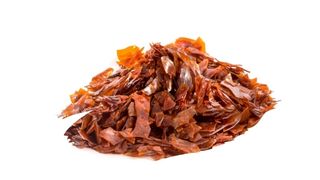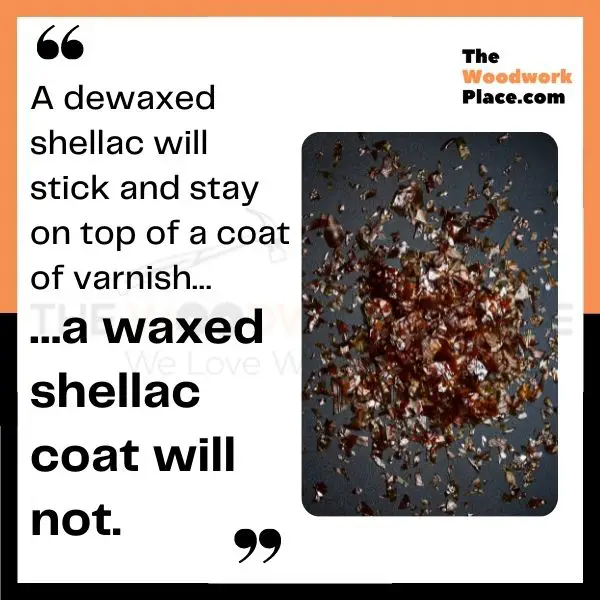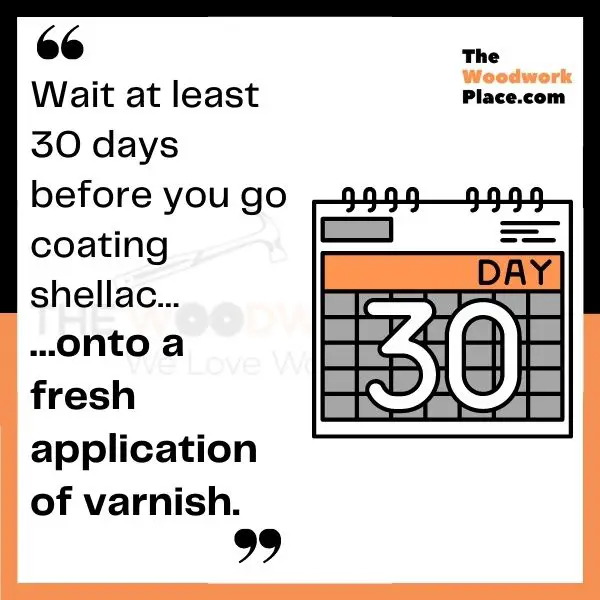Have you ever considered using shellac as a sealer? This naturally remarkable finish works absolute wonders on bare lumber.
And it can transform even the plainest looking wood by coating it with a natural gloss.
But, can a coat of shellac also work well on top of another finish entirely? For example, will shellac product stick to an oil-based varnish?
It depends on the shellac. You can apply dewaxed shellac onto varnish. However, waxed shellac works best when applied directly onto raw wood.
But, using the right type of shellac is just one part of the shellac/varnish bonding puzzle.
So, in this post, you will learn why pungent varnish fumes could prevent your shellac coat from staying in place.
Plus, we explain why the exact type of shellac you use matters for adhesion.

This post may contain affiliate links to products that we receive a commission for (at no additional cost to you). Learn more here.
What’s The Difference Between Waxed Shellac And Dewaxed Shellac?
Well, waxed shellac still has all of its natural wax in it. As a result, next to nothing will stick to a coat of this waxy version of a shellac finish.
Dewaxed shellac, on the other hand, is simply waxed shellac… however it has had all of it’s wax removed.
This stuff is incredibly sticky. So much so, that it is often used as a primer coat between two otherwise incompatible finishes.
That is because it will stick to almost anything, including varnish, wood, glass, and even concrete.
Needless to say, if you want to apply a top coat of shellac onto a varnish base coat, use dewaxed shellac.

Can You Even Put Shellac Over A Water-Based Varnish?
Dewaxed shellac will easily adhere to both a water-based or oil-based varnish. That’s provided the varnish coat has completely cured (and is no longer off-gassing).
What Is Off Gassing?
Off Gassing refers to the release of chemical fumes into the air. In woodworking, this term is typically used to describe those airborne gasses released from solvents, paints and oil finishes.
Related Post: Can You Use Shellac To Seal Over A Danish Oil Finish?
Why Does Off Gassing Matter?
We all know that as varnishes dry, they will release fumes into the air (also referred to as off gassing). But what you may not know is that, while varnishes are curing, they continue to release those fumes (albeit not as much as before).
Basically, coating anything over a still curing oil-based varnish is going to be a recipe for disaster. Especially as that shellac coat will be trapping those gas bubbles underneath it. This will cause air bubbling all across a shellac top coat.
Worst still, over time, those trapped gasses will weaken the bond between the shellac and varnish.
Related Post: Can You Varnish Over Wax Finished Furniture?

What Is The Difference Between Dry Varnish And Cured Varnish?
Well, as varnish dry’s it goes through a two step process; evaporation and chemical reaction.
Varnish dries by going through evaporation.
The solvents, (or water in water-based varnish), evaporate into the air. Those off-gassing fumes you smell, are an indication of this evaporation process.
However, when varnish cures, it is going through a chemical reaction. This process turns varnish into its final hard inflexible form.
How Long Does It Take Varnish To Cure? If that varnished wooden surface is drying at room temperature, (68 to 77°F / 20 to 25°C), then it will take around 30 days for it to cure. But, it will take longer in highly humid weather.
And Is Shellac A Durable Top Coat Finish?
As a finish for decorative pieces, (one’s that will rarely be handled), shellac holds up well as a sealer. It has natural UV resistance, so it won’t start to discolor over time.
And, surprisingly, it can handle heat fairly well. However, shellac isn’t at all durable when pitted against everyday wear and tear. That is because it is just too easy to scratch.
What’s more, it is easily water damaged. In other words, shellac will not be able to scratch-proof or waterproof your wood craft.
Related Post: Thinning Shellac With Mineral Spirits Won’t Work (Here’s What Will)
So, To Wrap Up, Here Are Your 3 Main Takeaways…
- 1). A dewaxed shellac will stick and stay on top of a coat of varnish. A waxed shellac coat will not.
- 2). Varnish must be allowed to cure completely first, before you apply any kind of top coat onto it.
- 3). Wait at least 30 days before you go coating shellac onto a fresh application of varnish.



